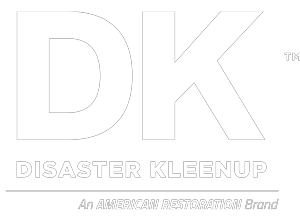Mold is more than just an unsightly nuisance in homes—it can also pose significant health risks and cause structural damage if left unchecked. In Idaho, where the climate can be both humid and prone to rapid changes, the risk of mold growth is particularly pronounced. Understanding the specific challenges and risks is crucial for homeowners to protect their properties and their health. Consider how you can engage in mold prevention in your Idaho home.
The Challenges of Mold Growth in Idaho
Idaho’s climate presents several factors that contribute to mold growth:
- Humidity Fluctuations: While Idaho is known for its dry climate, certain regions experience fluctuations in humidity levels, especially during the warmer months. High humidity, combined with inadequate ventilation, creates ideal conditions for mold spores to thrive.
- Seasonal Weather Changes: Idaho’s weather can vary dramatically throughout the year, from hot and dry summers to cold and wet winters. This fluctuation can lead to moisture buildup in homes, particularly in areas prone to leaks or condensation.
- Indoor Air Quality: Poor indoor air quality, often exacerbated by inadequate ventilation and insulation, can promote mold growth by trapping moisture and allowing it to accumulate in hidden areas of the home, such as attics, basements, and crawl spaces.
Risks Associated with Mold Infestations
The presence of mold in homes poses several risks to both property and health:
- Structural Damage: Mold can cause structural damage to homes by deteriorating wood, drywall, and other building materials over time. This can weaken the integrity of the structure and lead to costly repairs.
- Health Concerns: Exposure to mold spores can trigger allergic reactions, respiratory problems, and other health issues, particularly in individuals with asthma, allergies, or compromised immune systems.
- Property Value: The presence of mold can significantly decrease the value of a home and make it more difficult to sell, as prospective buyers may be wary of purchasing a property with a history of mold infestation.
Practical Tips for Mold Prevention
Fortunately, there are steps homeowners can take to prevent mold growth and protect their homes:
- Control Moisture Levels: Keep indoor humidity levels between 30% and 60% by using dehumidifiers and properly ventilating bathrooms, kitchens, and laundry areas.
- Address Water Damage Promptly: Repair leaks in plumbing, roofing, and windows immediately to prevent water from entering the home and creating moisture problems.
- Improve Ventilation: Ensure adequate ventilation in all areas of the home, including attics, basements, and crawl spaces, to promote airflow and prevent moisture buildup.
- Use Mold-Resistant Materials: Consider using mold-resistant building materials, such as mold-resistant drywall and paint, in moisture-prone areas of the home.
- Regular Maintenance: Conduct regular inspections of the home, especially after heavy rains or snowmelt, to identify and address any potential moisture issues before they escalate.
Things to Consider
Mold prevention is a critical aspect of maintaining a healthy and structurally sound home in Idaho. By understanding the challenges and risks associated with mold growth and implementing practical prevention strategies, homeowners can safeguard their properties and protect their families from the harmful effects of mold infestations.
If you suspect mold growth in your home or need assistance with mold remediation, don’t hesitate to contact Disaster Kleenup for professional assistance. We specialize in mold inspection, testing, and remediation to ensure your home remains safe and mold-free.
